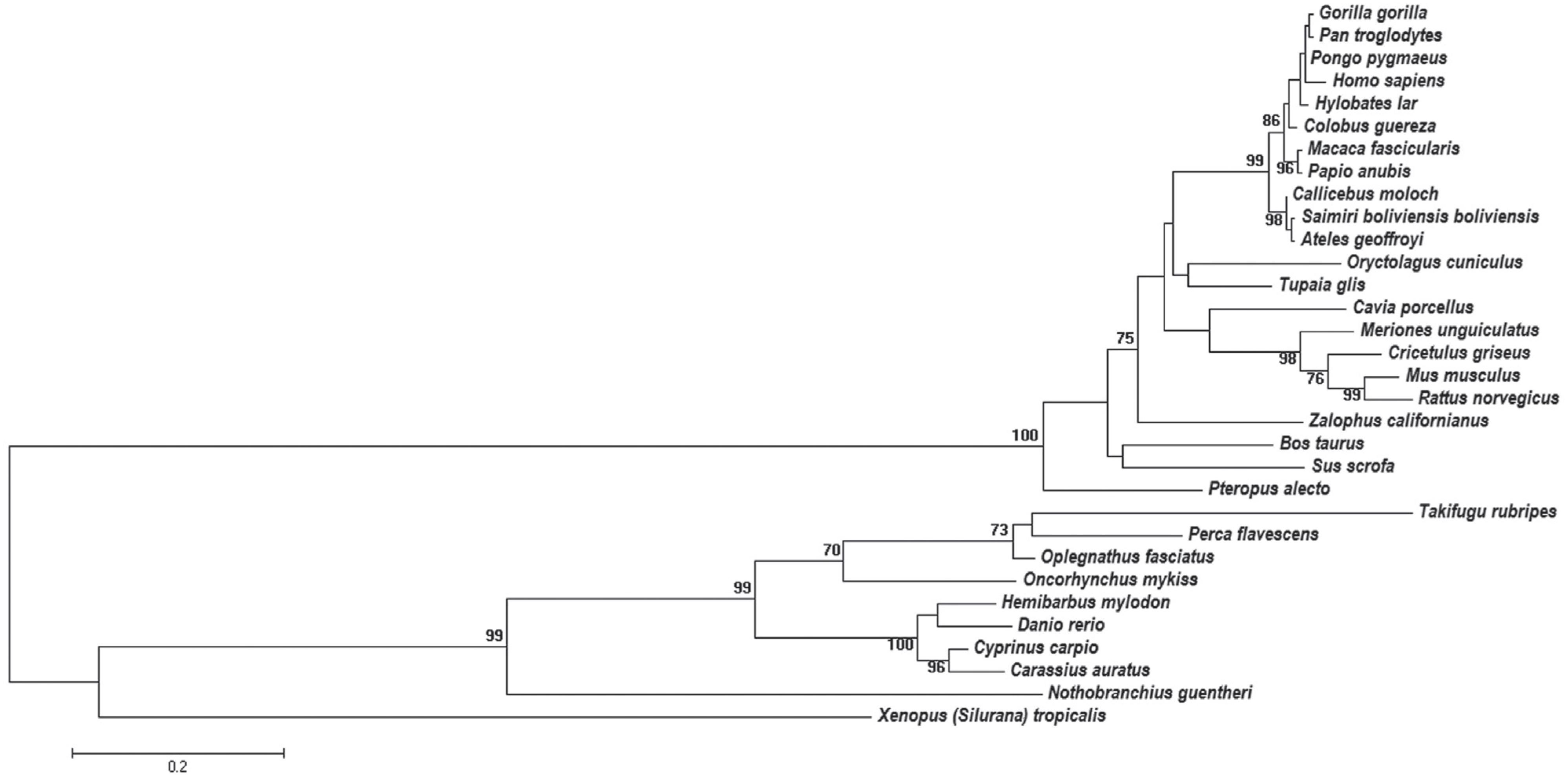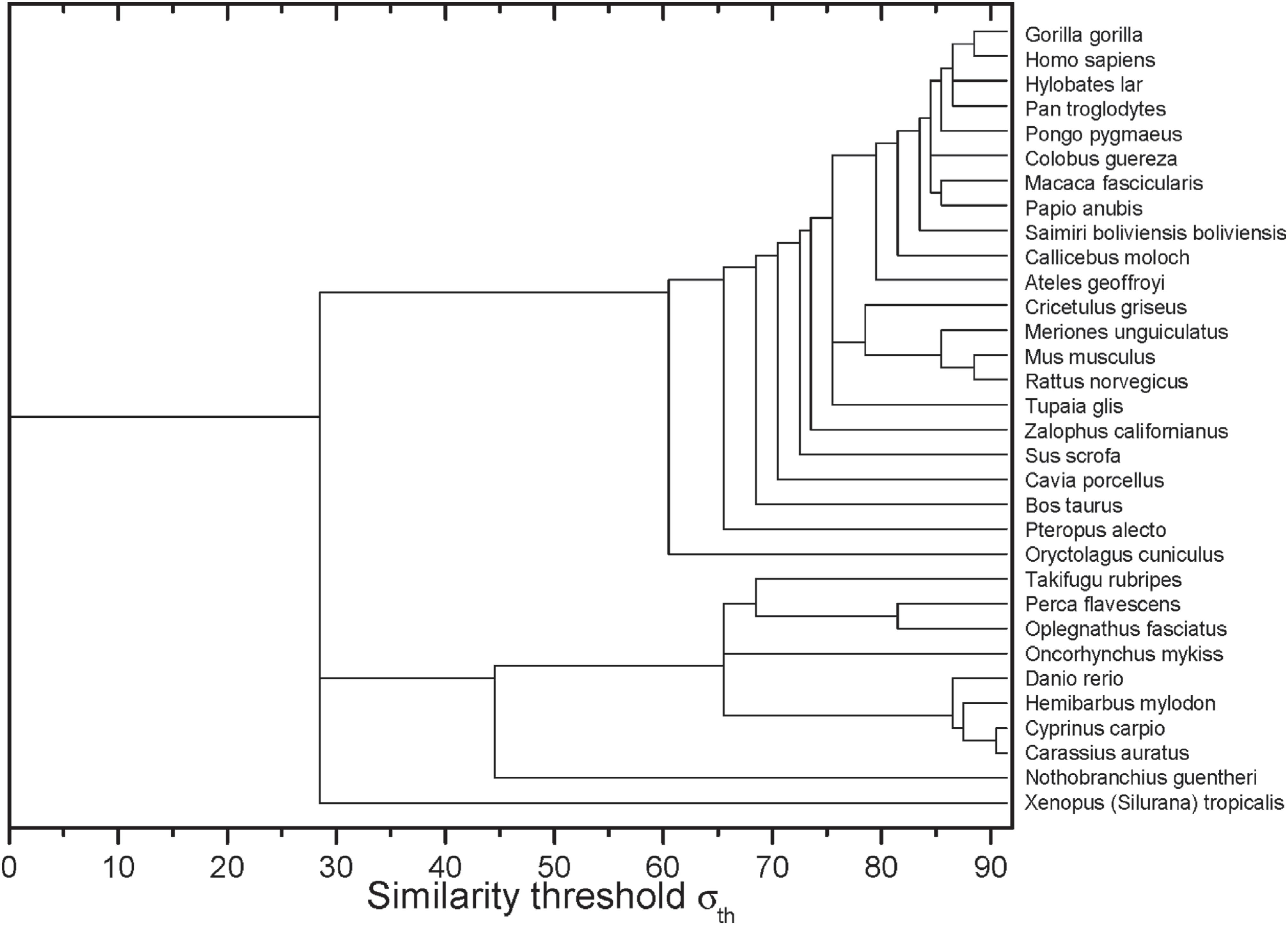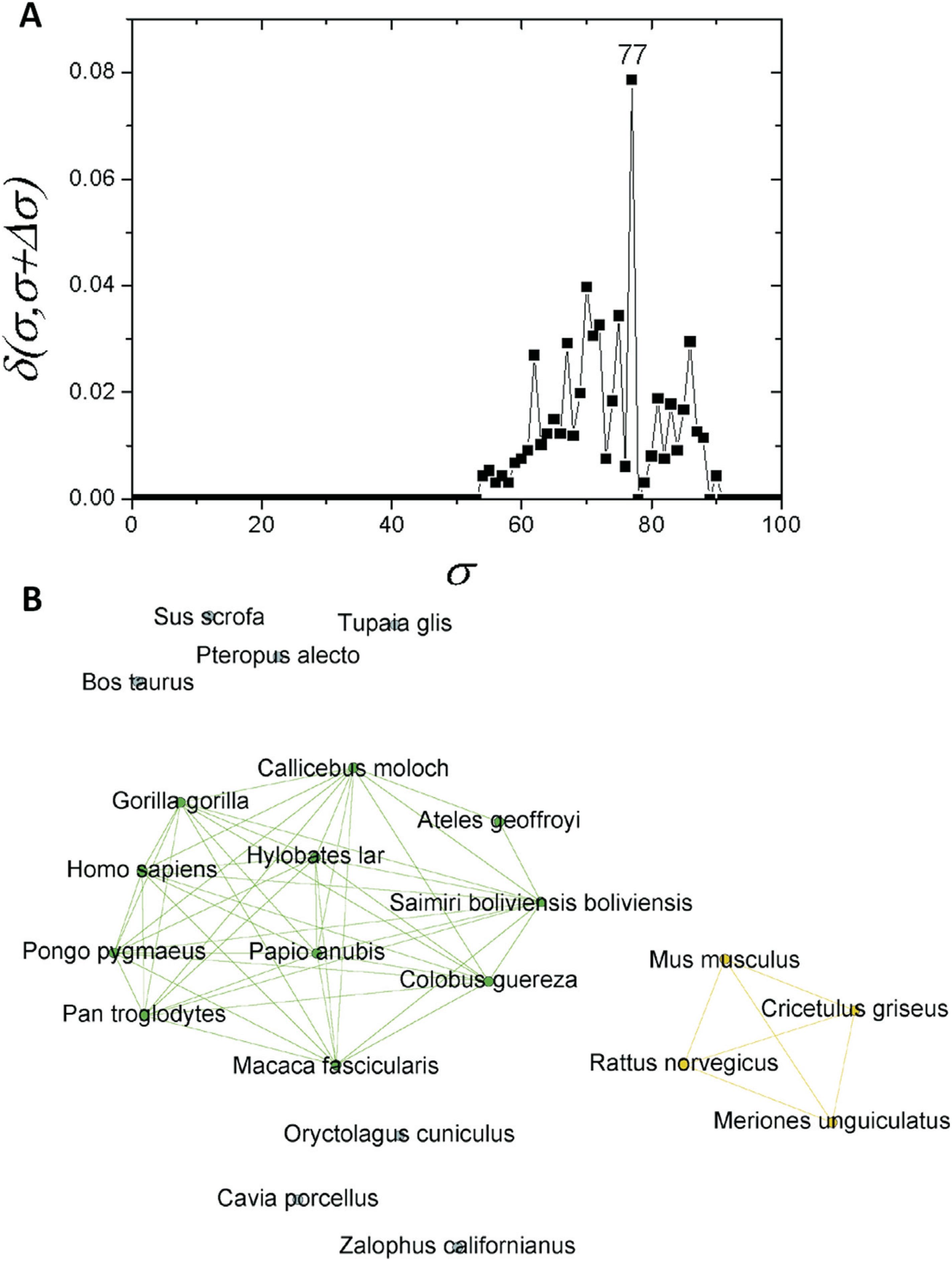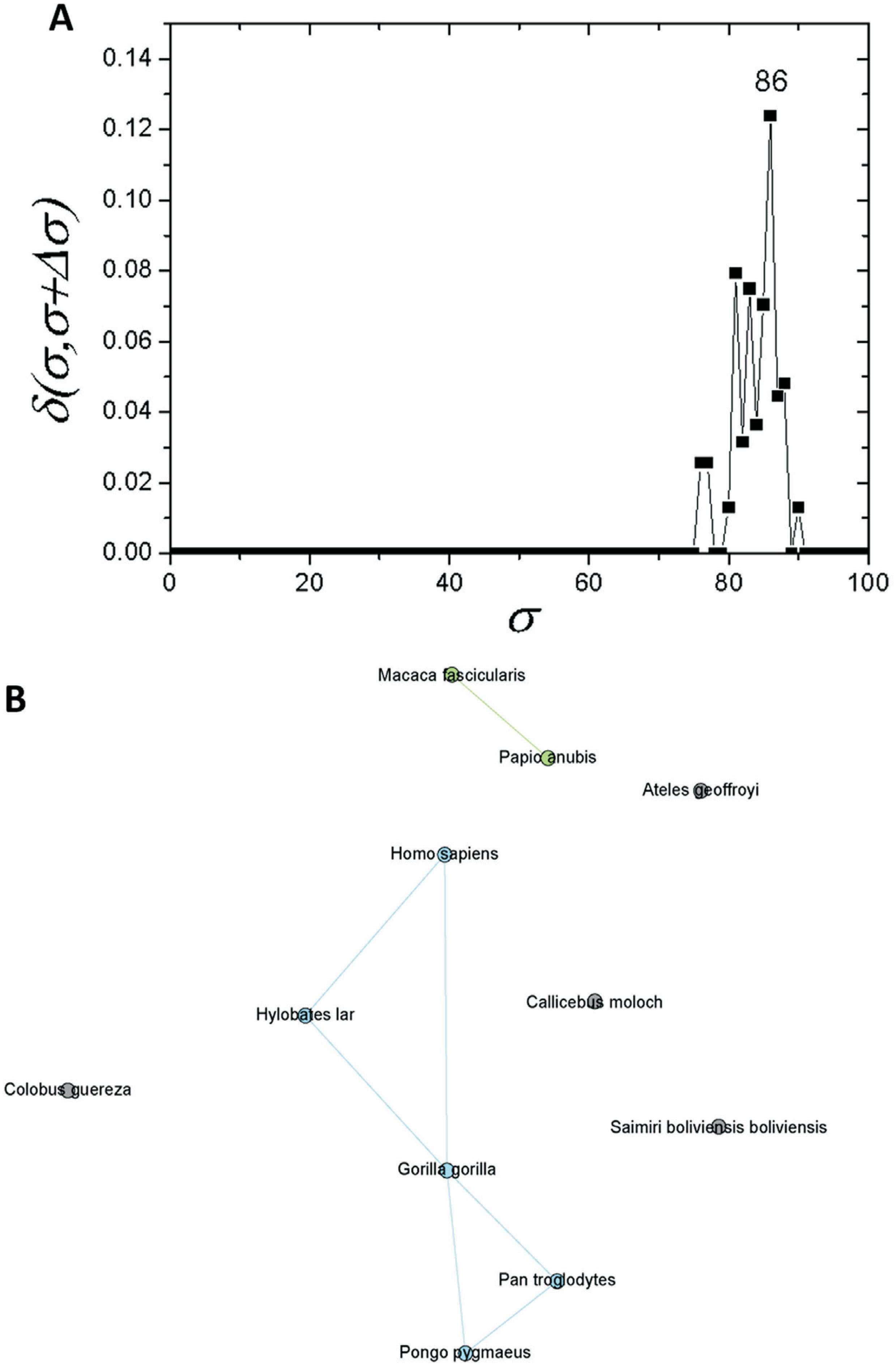Abstract
Apolipoprotein E (apo E) is a human glycoprotein with 299 amino acids, and it is a major component of very low density lipoproteins (VLDL) and a group of high-density lipoproteins (HDL). Phylogenetic studies are important to clarify how various apo E proteins are related in groups of organisms and whether they evolved from a common ancestor. Here, we aimed at performing a phylogenetic study on apo E carrying organisms. We employed a classical and robust method, such as Maximum Likelihood (ML), and compared the results using a more recent approach based on complex networks. Thirty-two apo E amino acid sequences were downloaded from NCBI. A clear separation could be observed among three major groups: mammals, fish and amphibians. The results obtained from ML method, as well as from the constructed networks showed two different groups: one with mammals only (C1) and another with fish (C2), and a single node with the single sequence available for an amphibian. The accordance in results from the different methods shows that the complex networks approach is effective in phylogenetic studies. Furthermore, our results revealed the conservation of apo E among animal groups.
Keywords
Apolipoprotein E; phylogeny; complex network; Maximum Likelihood






